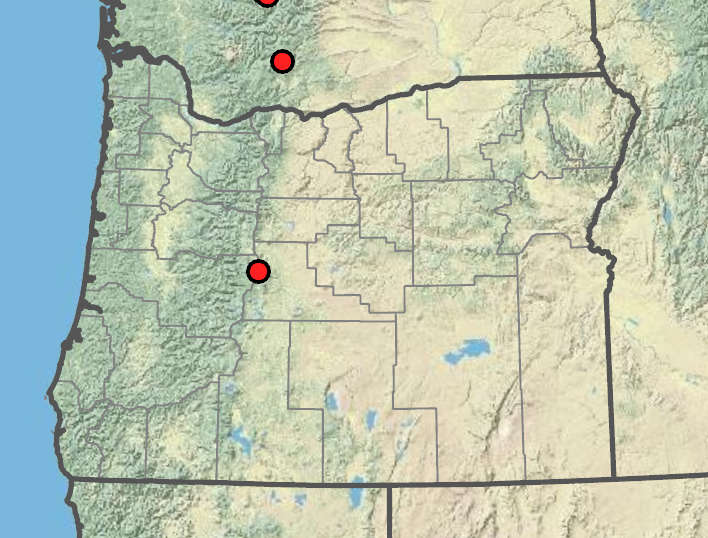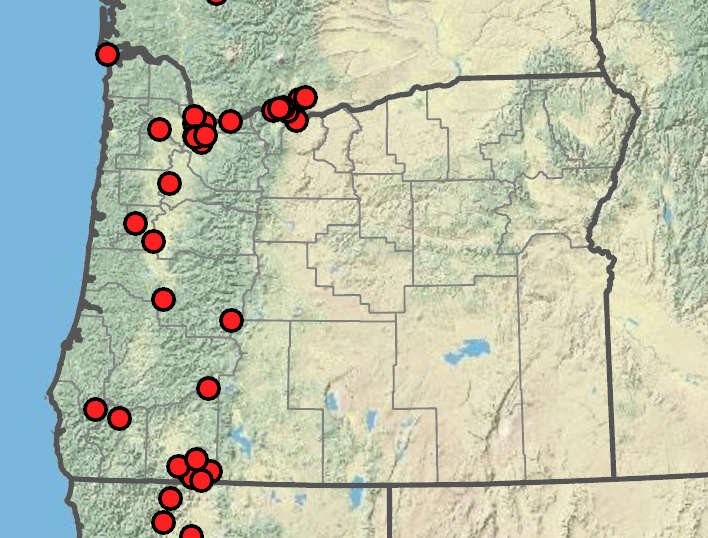Poa lettermanii
Poa howellii
Letterman's bluegrass
Howell's bluegrass
intra- and extravaginal or mainly intravaginal.
intravaginal.
sheaths closed to 25% of their length;
ligules 1–3 mm;
blades flat or folded, or slightly inrolled, 0.5–2 mm wide.
sheaths closed 50% or more of their length;
ligules 1.5–5(10)mm, blades of tillers flat, 1–7(10) mm wide, finely scabrous;
cauline blades 2–10 cm.
erect, contracted, 1–3 cm long, usually exserted from the sheaths;
branches erect to steeply ascending; slender; to 1.5 cm.
erect, eventually open, 10–25(30)cm; the branches eventually spreading or reflexed.
3–4 mm, green or purple;
florets 2–3;
rachilla internodes less than 1 mm long; smooth.
(2)4– 6 mm;
florets 2–5;
rachilla internodes about 1 mm; smooth, softly puberulent or occasionally glabrous.
lanceolate to broadly lanceolate, 2.4– 3.6(4) mm, usually equaling or exceeding the lowest lemma, frequently exceeding the upper florets;
lower glumes 3-veined.
slightly unequal;
keels and sometimes lateral veins scabrous;
lower glumes 1–3-veined.
glabrous.
with sparse cobwebby hairs on at least some florets.
lanceolate, 2.5–3 mm long, distinctly keeled; thin, glabrous;
keels and marginal veins rarely sparsely puberulent;
tips acute.
lanceolate to narrowly lanceolate, 2.5– 3.5 mm, distinctly keeled, evenly crisply puberulent near the base, finely scabrous distally;
margins narrowly hyaline;
tips narrowly acute, rarely purple.
0.2–0.8 mm.
0.2–1 mm.
nodes terete.
=14.
Poa lettermanii
Poa howellii
Rocky alpine ridges and ledges. 2900–3100m. Casc. CA, ID, NV, WA; north to British Columbia, east to CO. Native.
This is a small, cespitose, alpine bluegrass, most similar to P. suksdorfii. Both have subequal glumes that tend to be longer than the lowest lemma, but P. suksdorfii has larger spikelets with longer glumes. In Oregon, P. lettermanii is known only from high elevation on South Sister in the central Cascades.
Open, often moist woods and bottomlands, often with moss or boulders. 0–1100m. Casc, ECas, Sisk, WV. CA, WA; north to British Columbia. Native.
Rob Soreng, Barbara Wilson, Richard Brainerd, Nick Otting
Rob Soreng, Barbara Wilson, Richard Brainerd, Nick Otting
- Local floras:
BC,
CA,
OR,
WA
- Local Web sites:
CalFlora,
CalPhotos,
Flora NW,
PNW Herbaria
WildflowerSearch
iNaturalist (observations)
USDA Plants Database
- LBJ Wildflower Center
- SEINet
- Plants of the World Online
- Encyclopedia of Life
- Wikipedia
- Google Image Search
- Local floras:
BC,
CA,
OR,
WA
- Local Web sites:
CalFlora,
CalPhotos,
Flora NW,
PNW Herbaria
WildflowerSearch
iNaturalist (observations)
USDA Plants Database
- LBJ Wildflower Center
- SEINet
- Plants of the World Online
- Encyclopedia of Life
- Wikipedia
- Google Image Search



